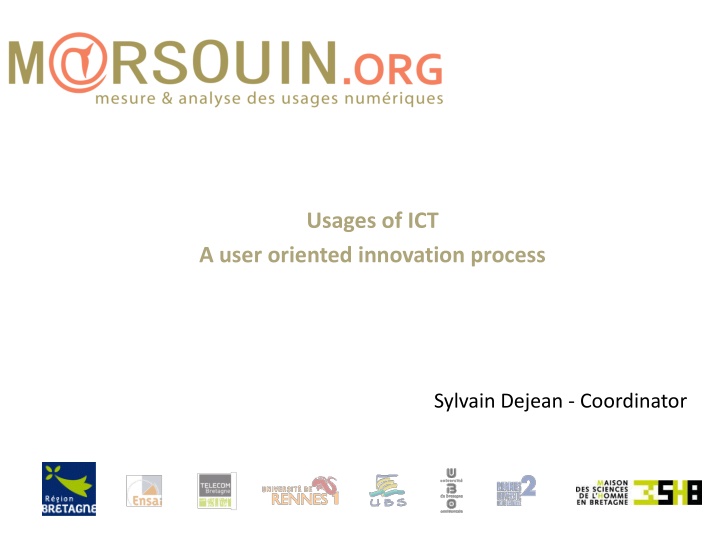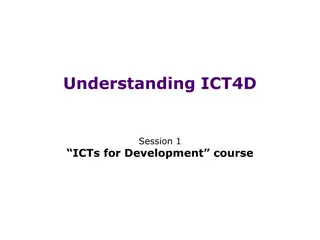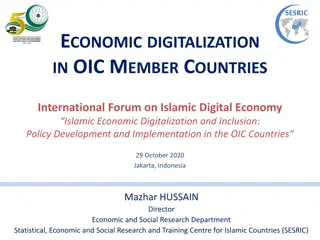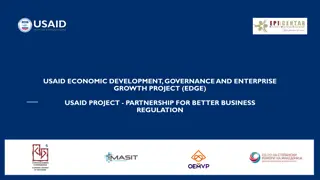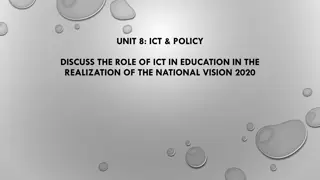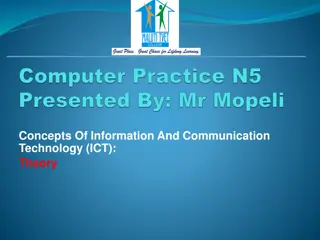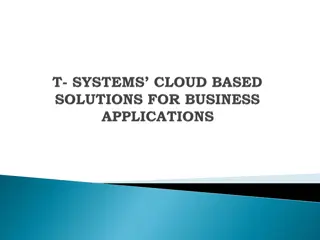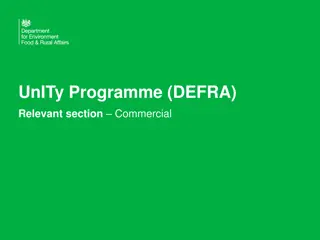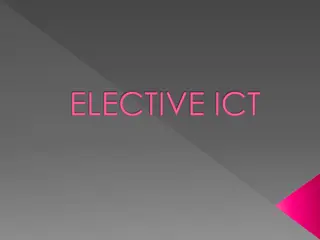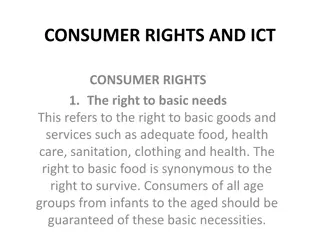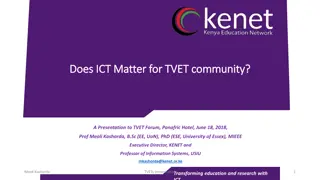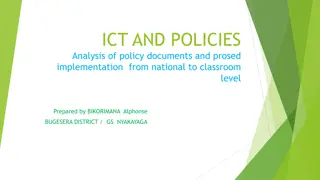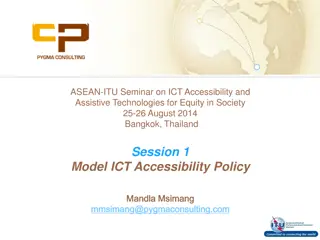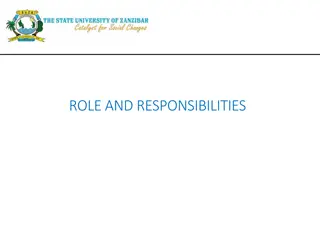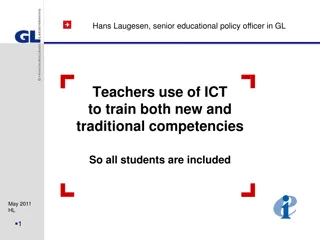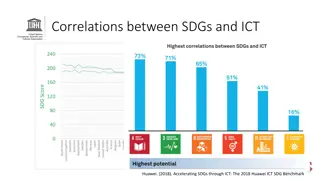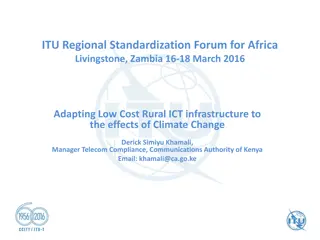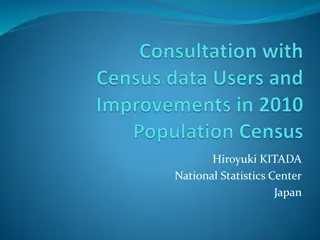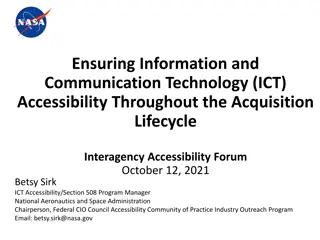Innovations in User-Oriented ICT Research at M@rsouin
M@rsouin is a research initiative focusing on ICT innovations in user-oriented processes. Led by Sylvain Dejean, M@rsouin coordinates interdisciplinary expertise to study Internet usage, evaluate public policies, and collaborate with industries. With three key platforms supporting researchers across various fields, M@rsouin delves into four main research areas: digital learning, social interaction, public policy impact, and economic implications of digital technologies. M@rsouin's strengths lie in its diverse expertise, integrated approach, user-centric process, and real-world observation. The observatory component uniquely combines questionnaires and research to provide in-depth analyses on ICT usage. Through laboratory experiments, M@rsouin utilizes innovative methods to evaluate and improve ICT usability.
Download Presentation

Please find below an Image/Link to download the presentation.
The content on the website is provided AS IS for your information and personal use only. It may not be sold, licensed, or shared on other websites without obtaining consent from the author.If you encounter any issues during the download, it is possible that the publisher has removed the file from their server.
You are allowed to download the files provided on this website for personal or commercial use, subject to the condition that they are used lawfully. All files are the property of their respective owners.
The content on the website is provided AS IS for your information and personal use only. It may not be sold, licensed, or shared on other websites without obtaining consent from the author.
E N D
Presentation Transcript
Usages of ICT A user oriented innovation process Sylvain Dejean - Coordinator
The Gis M@rsouin Gathers Breton laboratories which have two common denominators Human and Social Sciences expertises The study of Internet usages Is able to: Lead research program Evaluate public policy Collaborate with industrial in a user oriented conception process
General organization 3 Platforms TECHNOLOGICAL PLATFORM OBSERVATORY LABORATORY EXPERIMENT to support 50 researchers in 4 universities and 2 schools Economics Communication studies Social Cognitive Psychology Education science Management Science, Political science Ergonomy Sociology
4 main fields of research Learning How digital technologies change and contribute to news forms of learning. Social interaction New technologies enable to create new sociability, new sharing process, news information and knowledge production, news media. Public area How can new digital technologies help public policy makers and citizen. Market Economic impact of digital technologies, e-commerce development, network economics.
The strengths of M@rsouin Interdisciplinary Diversity of expertise, methodology and knowledge M@rsouin is able to coordinate and integrateall these various approaches Put users at the core process Observation in real context Specific situation experimented in laboratory Target users as regard to issues and needs addressed. Ability to bring expertise's at each stage of the conception process.
The observatory Couples questionnaire and research issues to produce original and meaningful analysis. Content: Photography of equipment and usages, prospective analysis, need assessment, satisfaction analysis, profiling. Methodology: Building questionnaire, sampling, definition of quotas and representatively, monitoring the survey (recovering respondents) Treatment: cleaning database, statistical analysis (cross and frequency tab) specific treatment, multivariate analysis (typology, factorial analysis), econometrics.
Laboratory experiment A set of three platforms evaluating the uses of ICT User-centered Design Process Collecting and analyzing data on uses Enhancing methods of observation Usability testing and recommendations for product improvement. Equipment : Apartment Audio-video recording Eye-tracking and test room LOUSTIC Rennes platform Protocol to test: Before design: user and organizational requirements analysis During design: iterative design-evaluation After design: acceptance evaluation, post experience interviews
Technological platform ImaginLab is an open platform dedicated to integration test, interoperability and usages experiment of new digital technologies on fixed and mobile networks. Lannion: Broadband connexion (FTTH, FTTO) Brest: high speed wireless technology (LTE/4G) Rennes: Digital TV (DVB-T2) On each platform a panel of users Imagineurs are available to experiment, test and observe innovative services and products.
The user driven Innovation Making products and services usable Closing the gap between what user wants and what products are able to do. Social and Human sciences are best able to bring their expertise. Necessity to intervene early in the production process A large, diverse and motivated panel of experimenter is needed.
A user oriented conception process Production process During After Before Users needs Prototypes testing Post-experience evaluation Expert evaluation Market analysis Evolution of uses Typology of current users and usages Usability tests Consumer fulfillment Valuable functionalities Experiments Observation in situ
Before the production process Need to know WHO is going to use the product/service Socio-economic characteristic Age, income, formation, location Current environment Equipment, usage related to the new product and service. Need to evaluate WHAT they need ? and WHY do they need it ? What is missing in current usages Barriers to usage, social and individual impediments In the user point of view what would be valuable for future. Evaluation of the willingness to pay, valuable functionalities A market study Analyze how the market is structured Competition, legal and financial context
Before the production process Issues addressed Methodologies DELIVRABLES Questionnaire: Representative population Targeted population Immersion Ethnographic investigation Typology of users Statistical analysis of socio economic determinant of usages. Who is going to use Description of current environment Report on users needs Limitation of current usages Social and personnal barriers Acceptability of the future prototype features/ Questionnaire: Interview Representative population Targeted population Expected features of the prototype Users needs D finition of uses case Face to face Focus Group Refinement of the user interface design rules Economic and marketing survey Market analysis Market survey and issues
During the production process How the user perceives the product/service and its functionality Is it perceived as useful for future user? Is it perceived as easy to use for future user? Does the user intend to use the product/service? User oriented conception Iterative test between user and designer Expert evaluations Usability tests Experiments Aiming to record Objective data ( errors, efficiency, eye tracking data, trace data) Subjective data (satisfaction, usability, utility) Until a final validation of the product/service
During the production process Issues addressed Methodologies DELIVRABLES Expert evaluation Few experts (user experience designer, software developer) inspecting the prototype according to a set of ergonomic rules for conception Appropriateness to ergonomic rules Usability test Few users (10-20) interacting with the prototype according to different scenarii Assisted observation: Eyetracking, audiovisual recording, trace analysis Report on the perceived utility and usability of the service/product Enhancing utility and usability Report on usability performance and satisfaction. Experiments Experimental comparisons of prototype design with users (15/15) interacting with several versions of the same prototype according to different scenarii Assisted observation: Eye-tracking, audiovisual recording, trace analysis Report pointing the best prototype design Refinement of the user interface design rules
After the production Process Consumer fulfillment How the final product fit with user s expectation Evolution of uses How does the user appropriated the service/product Is there an evolution in the way he uses it Issues addressed Methodologies DELIVRABLES Report on real usage Post experience user acceptance (after using the product/service) Consumer fulfillment & Evolution of uses Questionnaire: Targeted population of users Acceptance of the product/service Daily constraints and incitations to use the product/service Interview Support requirements Face to face Recommendations for future development
Thanks for your attention contact@marsouin.org enquete@marsouin.org eric.jamet@mshb.fr severine.erhel@mshb.fr
